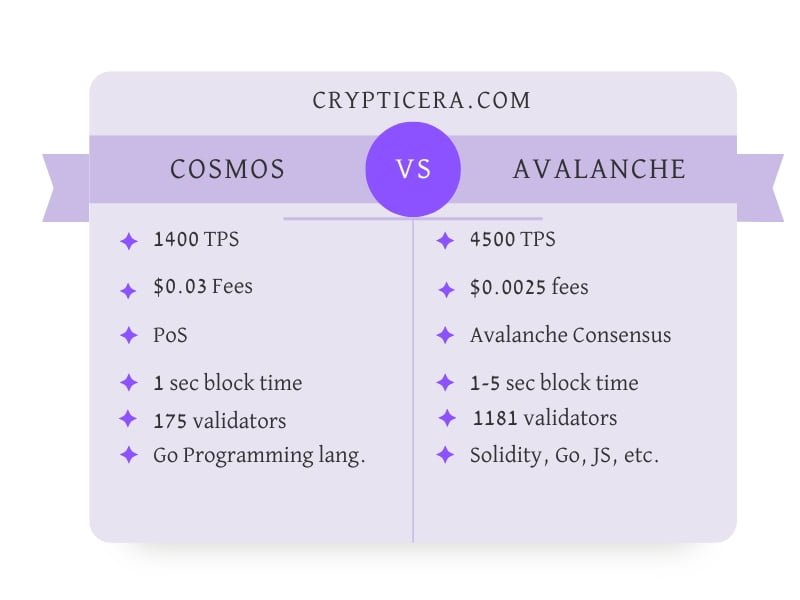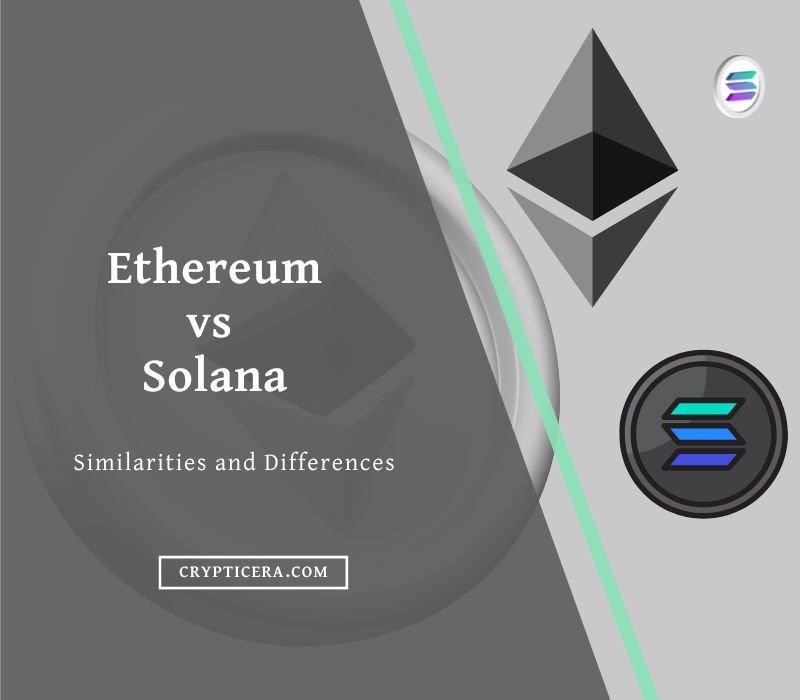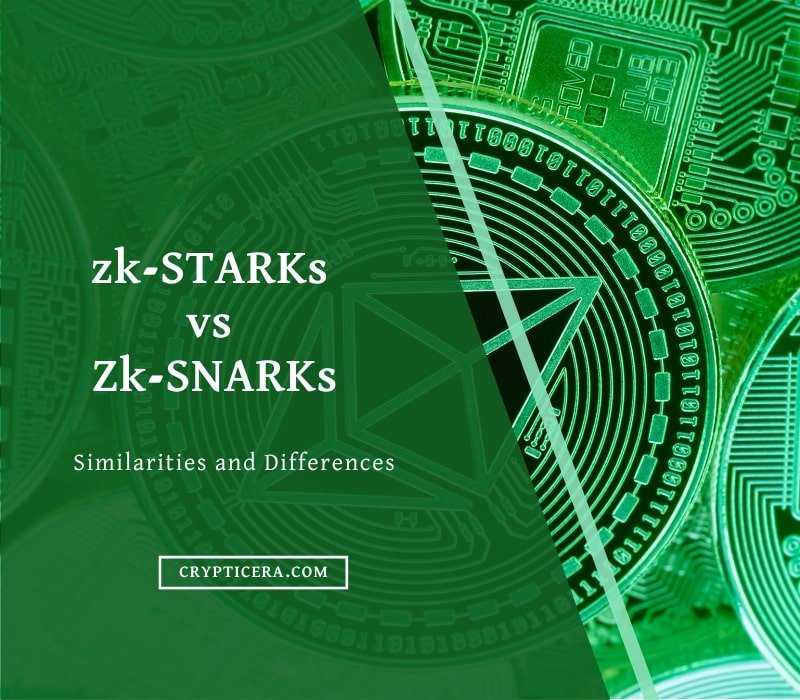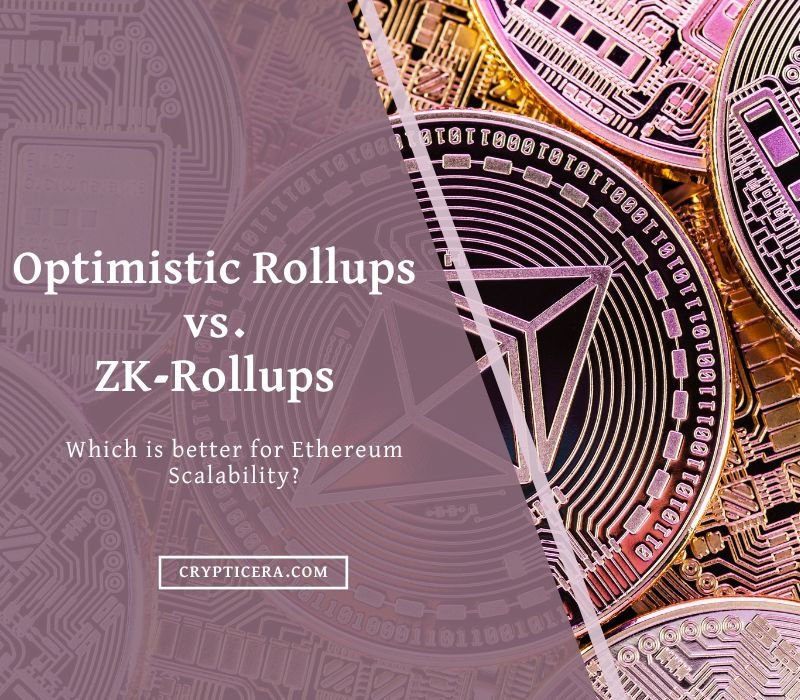In the world of decentralized and distributed blockchain networks, two of the most promising and innovative platforms are Cosmos and Avalanche.
These networks have gained significant traction in the crypto community, and have a lot to offer in terms of high transaction throughput, fast confirmation times, and support for complex smart contracts.
In this blog post, we will compare these two networks and explore their key features, differences, and potential use cases.
Cosmos vs Avalanche (AVAX): At a Glance
| Feature | Avalanche | Cosmos |
|---|---|---|
| Consensus mechanism | Avalanche Consensus | Proof-of-stake (PoS) |
| Smart contracts | Built-in | Modular design |
| Governance | Council of validators and stakeholders | Decentralized governance |
| Interoperability | No | Yes |
| Development | Ava Labs | Interchain Foundation |
| Launch date | September 2020 | March 2019 |
| Native token | AVAX | ATOM |
| Partnerships | Various | Binance, Cosmos Hub, Ethereum Foundation |
| Use cases | DeFi, gaming, supply chain management | DeFi, gaming, cross-chain communication |
What is Cosmos (ATOM)?

Cosmos is a decentralized network of independent parallel blockchains, each powered by BFT consensus algorithms like Tendermint consensus.
Cosmos uses a decentralized network of proof-of-stake (PoS) validators to achieve consensus.
The native cryptocurrency of the Cosmos network is called Atom (ATOM).
Key Features of Cosmos (ATOM)
As a decentralized network of blockchains, Cosmos has several key features that make it unique:
- Scalability: ATOM uses a distributed network of independent blockchains, called zones, that can process transactions in parallel.
- Interoperability: ATOM has the ability to connect and exchange data with other blockchains, allowing for cross-chain communication and integration.
- Modularity: The network is composed of modular components that can be easily customized and adapted to fit the needs of different applications.
- Security: Cosmos uses a unique consensus algorithm called Tendermint that provides strong security guarantees and ensures the integrity of the network.
- Governance: Blockchain has a decentralized governance model where stakeholders can propose and vote on changes to the network.
- User experience: It has a user-friendly interface and offers a variety of developer tools to make it easier for users to build and deploy applications on the platform.
Pros and Cons of Using Cosmos Blockchain
Here are some potential pros and cons of using the Cosmos (ATOM) blockchain:
Benefits:
- Scalability: Cosmos has a decentralized network of independent parallel blockchains which can increase scalability compared to other platforms. This enables more transactions per second, improving network performance.
- Interoperability: ATOM is designed to be interoperable with other blockchain platforms, allowing for asset and data transfer between networks. This enables different projects to work together and share resources.
- PoS consensus: Cosmos uses proof-of-stake (PoS) consensus, allowing users to earn rewards by staking their ATOM tokens to validate transactions. This incentivizes users to support the network and helps secure it against attacks.
Drawbacks:
- Complexity: The use of multiple parallel blockchains and the focus on interoperability can make the Cosmos platform complex and challenging to understand for some users.
- Limited adoption: ATOM is a relatively new platform, and its adoption among businesses and users is still relatively limited compared to other blockchain platforms.
What is Avalanche (AVAX)?

Avalanche (AVAX) is a decentralized finance platform built on the Avalanche blockchain. It is designed to enable users to easily create and manage financial applications and services.
This includes digital asset exchanges, stablecoins, and lending and borrowing platforms.
The platform uses a unique consensus mechanism called “Avalanche consensus” that allows for high transaction throughput and low transaction fees.
AVAX is the native cryptocurrency of the Avalanche platform and is used to pay transaction fees and other platform services.
features of avalanche blockchain
Here are some additional features of the Avalanche blockchain:
- High transaction throughput: The Avalanche consensus mechanism allows the platform to process thousands of transactions per second, making it suitable for high-volume applications such as decentralized exchanges.
- Low transaction fees: The platform uses a proof-of-stake consensus mechanism, which allows users to earn rewards for participating in the network and helps to keep transaction fees low.
- Flexible consensus: The Avalanche consensus mechanism allows users to choose the level of security and decentralization they want for their applications, allowing for a wide range of use cases.
- Interoperability: The AVAX platform allows for interoperability between different blockchains. It helps users easily move assets between different networks and use a wide range of financial applications.
- Governance: The platform has a built-in governance mechanism that helps to ensure that the network remains decentralized and responsive to user needs.
Pros and Cons of Avalanche Blockchain
Benefits:
- High transaction throughput: Avalanche can process thousands of transactions per second, making it suitable for large-scale applications such as decentralized finance (DeFi) and gaming.
- Fast confirmation times: Transactions are typically confirmed within seconds, enabling near-instant settlements and reduced risk of double-spending.
- Secure and decentralized: Avalanche is built on a decentralized and distributed ledger, making it resistant to tampering and censorship.
- Flexible smart contract platform: Avalanche allows for the creation and execution of complex smart contracts, enabling a wide range of use cases and applications.
- Strong governance: The Avalanche network is governed by a council of validators and stakeholders, ensuring that decisions are made in the best interest of the network.
Drawbacks:
- Limited adoption: ATOM is still relatively unknown compared to other blockchain networks such as Ethereum and Bitcoin.
- Limited scalability: Its scalability is limited by the number of validators participating in the network.
- Potentially high transaction fees: The fees on the Avalanche network are determined by the validators, and can vary depending on the demand for transactions. This may result in higher fees compared to other blockchain networks.
- Immature technology: As a relatively new blockchain network, Avalanche is still in the early stages of development.
Cosmos (ATOM) vs Avalanche (AVAX): The Ultimate Comparison
Avalanche and Cosmos are both decentralized and distributed blockchain networks that aim to provide high transaction throughput and fast confirmation times.

Consensus Mechanism
Avalanche uses a unique consensus mechanism called “Avalanche” that is based on a probabilistic voting system. This mechanism allows for high transaction throughput and fast confirmation times, as well as strong security and decentralization.
On the other hand, Cosmos uses a proof-of-stake (PoS) consensus mechanism. In this mechanism, validators in the network stake their tokens in order to earn the right to validate transactions and create new blocks.
The more tokens a validator stakes, the higher their chances of being chosen to validate transactions and earn rewards.
This consensus mechanism allows for high scalability and energy efficiency, as well as strong security and decentralization.
Extra Information: In Avalanche consensus, nodes in the network are divided into “correct” and “incorrect” categories based on their behavior. Correct nodes follow the protocol and propose valid transactions, while incorrect nodes may behave maliciously or try to propose invalid transactions. The network reaches consensus by allowing nodes to vote on the validity of transactions and reach a threshold of agreement. This process is known as “Snowball voting.”
Smart Contracts
Avalanche has its own built-in smart contract platform that allows for the creation and execution of complex smart contracts.
This platform is based on the Ethereum Virtual Machine (EVM) and supports the use of Solidity, the most popular programming language for Ethereum smart contracts.
This allows developers to easily create and deploy smart contracts on the Avalanche network and enables a wide range of use cases and applications.
On the other hand, Cosmos has a modular design that allows for the integration of multiple different smart contract platforms. This allows developers to choose the best platform for their specific needs.
ATOM also has its own smart contract platform called the Cosmos SDK, which is based on the WebAssembly (Wasm) virtual machine. It also supports multiple programming languages.
Governance
Avalanche is governed by a council of validators and stakeholders. They are responsible for making decisions about the network and its direction.
This council is composed of individuals and organizations that have a significant stake in the network and have proven their commitment to its success.
This governance model ensures that decisions are made in the best interest of the network, and allows for strong accountability and transparency.
On the other hand, Cosmos has a more decentralized governance model where token holders can vote on network decisions.
This model allows for greater participation and inclusion, but may also result in more conflicts and disputes.
Cosmos also has a governance council that is responsible for making high-level decisions about the network.
But this council is composed of elected representatives rather than validators and stakeholders.
Interoperability
Avalanche does not have any built-in support for interoperability with other blockchain networks.
This means that value and information cannot be transferred between different chains on the Avalanche network. This limits its potential use cases and applications.
On the other hand, Cosmos has a strong focus on interoperability and has built-in support for connecting and communicating with other blockchain networks.
It has many use cases that require cross-chain communication.
Cosmos also has its own interoperability protocol called IBC (Inter-Blockchain Communication). It is for secure and efficient communication between different chains.
History and Development
Avalanche was launched in September 2020, while Cosmos was launched in March 2019.
Avalanche was developed by a team at the Brooklyn-based blockchain company Ava Labs.
Ava Labs was founded by Emin Gun Sirer, a well-known computer scientist and blockchain expert. The team has received significant funding from venture capital firms and other investors.
On the other hand, Cosmos was developed by the Interchain Foundation, a non-profit organization based in Switzerland.
This organization is dedicated to promoting the development and adoption of decentralized and distributed technologies. It has a strong focus on interoperability and cross-chain communication.
It has received significant funding from various sources, including the Ethereum Foundation and the Interchain Foundation.
ATOM vs AVAX: Token Economics
The native token of the Avalanche network is called AVAX, and it has a fixed total supply of 720 million tokens.
This token is used to facilitate transactions on the network, as well as to incentivize participation and contribute to network security.
AVAX can be earned by participating in the network as a validator or a staker, and can also be purchased on various cryptocurrency exchanges.
On the other hand, the native token of the Cosmos network is called ATOM, and it has a maximum supply of 265 million tokens. it also has a similar mechanism for earning tokens.
Cosmos vs Avalanche: Which is better?
| Feature | Winner |
|---|---|
| Consensus mechanism | Both |
| Smart contracts | Cosmos |
| Governance | Both |
| Interoperability | Cosmos |
| Development | Avalanche |
| Token economics | Avalanche |
Crypto Exchanges to buy ATOM and AVAX
There are several cryptocurrency exchanges where you can buy Cosmos (ATOM) or Avalanche (AVAX), including:
- Binance: Binance is one of the largest and most popular cryptocurrency exchanges, and supports the trading of ATOM and AVAX against various other cryptocurrencies.
- Kraken: Kraken is a leading US-based cryptocurrency exchange, and supports the trading of ATOM and AVAX against various other cryptocurrencies and fiat currencies.
- Huobi: Huobi is a leading Asian cryptocurrency exchange, and supports the trading of ATOM and AVAX against various other cryptocurrencies.
- Bithumb: Bithumb is a leading Korean cryptocurrency exchange, and supports the trading of ATOM and AVAX against various other cryptocurrencies.
- Bitfinex: Bitfinex is a leading cryptocurrency exchange based in Hong Kong, and supports the trading of ATOM and AVAX against various other cryptocurrencies.
Conclusion
In conclusion, both Cosmos and Avalanche are decentralized and distributed blockchain networks that have gained significant traction in the crypto community.
While they have some similarities, such as high transaction throughput and fast confirmation times. They also have some key differences, such as their consensus mechanisms, smart contract platforms, and governance models.
These differences make each network better suited for certain types of applications and use cases. The choice of which one to use would depend on the specific needs and requirements of the project or application.
Overall, both networks have strong potential to disrupt and transform various industries. This will likely continue to grow and evolve as they gain more adoption and support.
FAQs
Cosmos vs Avalanche: Which network has better scalability?
Both networks have high transaction throughput and are capable of processing thousands of transactions per second. However, Cosmos has a more scalable design, as its proof-of-stake (PoS) consensus mechanism allows for an unlimited number of validators to participate in the network. On the other hand, the scalability of Avalanche is limited by the number of validators participating in the network.
Cosmos vs Avalanche: Which network has better security?
Both networks are decentralized and distributed and are therefore resistant to tampering and censorship. However, the security of each network depends on various factors, such as the number and quality of validators participating in the network, and the robustness of the underlying protocols and algorithms.
Which network is more suitable for decentralized finance (DeFi)?
Both networks are suitable for decentralized finance (DeFi) applications and have strong support for complex smart contracts. However, Cosmos has a stronger focus on interoperability, which makes it more suited for DeFi applications that require cross-chain communication and coordination. On the other hand, Avalanche may be more suitable for DeFi applications that do not require interoperability, or that require high transaction throughput and fast confirmation times.


